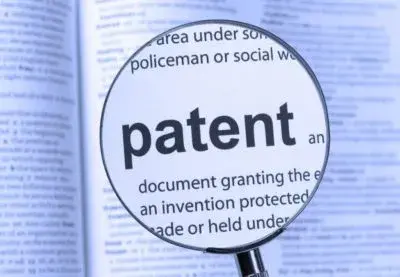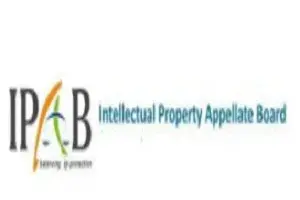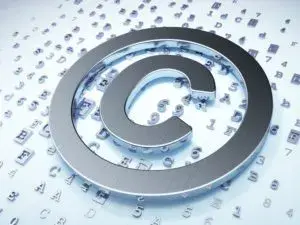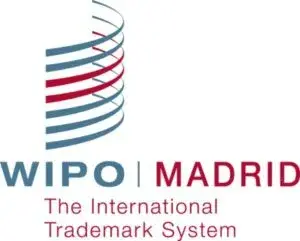India: Computer Programs patentable if “Technical Effect” or “Technical Contribution” Demonstrated: Delhi High Court
 In a recent case namely, Ferid Allani v. Union of India & ors., the Hon’ble High Court of Delhi has held that an invention even if based on a computer program demonstrates a “technical effect” or a “technical contribution” is patentable.
In a recent case namely, Ferid Allani v. Union of India & ors., the Hon’ble High Court of Delhi has held that an invention even if based on a computer program demonstrates a “technical effect” or a “technical contribution” is patentable.
India: File Appeal against IPAB’s order directly at the Supreme Court
 On December 06, 2019, the Ministry of Commerce and Industry has reiterated in a press release that any appeal against an order of the Intellectual Property Appellate Board (hereinafter referred to as ‘IPAB’) can be filed directly before the Hon’ble Supreme Court.
On December 06, 2019, the Ministry of Commerce and Industry has reiterated in a press release that any appeal against an order of the Intellectual Property Appellate Board (hereinafter referred to as ‘IPAB’) can be filed directly before the Hon’ble Supreme Court.
India: Cloud Computing and Patent Filing Trends in India
 As more and more applications and services are becoming available on smartphones and other wireless devices, computing is no more limited to a single stand-alone desktop device. Applications are now being run and maintained remotely through cloud computing.
As more and more applications and services are becoming available on smartphones and other wireless devices, computing is no more limited to a single stand-alone desktop device. Applications are now being run and maintained remotely through cloud computing.
India: Animation and it’s protection under Copyright Law
 Throughout the history of mankind, the combined artistic affinity has given rise to various forms of artistic expressions. One such form is the use of multiple still pictures to show motion and movement. From as far back as 5000BC Iran, where an old pottery bowl was discovered in Shahr-e Sukhteh
Throughout the history of mankind, the combined artistic affinity has given rise to various forms of artistic expressions. One such form is the use of multiple still pictures to show motion and movement. From as far back as 5000BC Iran, where an old pottery bowl was discovered in Shahr-e Sukhteh
Israel: Change in individual filing fee vis Madrid Protocol
 The Government of Israel notified the Director General of World Intellectual Property Organization (WIPO) a declaration modifying the individual fee for filing international applications designating Israel via the Madrid protocol.
The Government of Israel notified the Director General of World Intellectual Property Organization (WIPO) a declaration modifying the individual fee for filing international applications designating Israel via the Madrid protocol.
Google v. Oracle case: The Fate of Software Development
 The case that has transcended into new definitive realms over the course of its proceedings over nearly a decade, has again found a newer turn recently when the U.S. Supreme Court accepted a petition by Google to review all prior decisions taken by the Federal Circuits in the matter at hand.
The case that has transcended into new definitive realms over the course of its proceedings over nearly a decade, has again found a newer turn recently when the U.S. Supreme Court accepted a petition by Google to review all prior decisions taken by the Federal Circuits in the matter at hand.
India: Computer Programs patentable if “Technical Effect” or “Technical Contribution” Demonstrated: Delhi High Court

By Renu Bala and Sukku
In a recent case namely, Ferid Allani v. Union of India & ors., the Hon’ble High Court of Delhi has held that an invention even if based on a computer program demonstrates a “technical effect” or a “technical contribution” is patentable.
Brief Facts:
The present writ petition was filed before the Hon’ble High Court of Delhi against IPAB’s (Intellectual Property Appellate Board) order, wherein the IPAB while confirming the order of Patent Office rejected the Petitioner’s patent application for “method and device for accessing information sources and services on the web”.
The petitioner’s application was rejected by the Patent office on the ground that Claims 1-8 is a computer program and does not constitute to be a patentable invention as defined in Sub-section k of Section 3 of Patent Acts 1970 and Claimed invention in Claims 9-14 lacks Novelty as well as Inventive steps.
Aggrieved by the aforesaid, the Petitioner approached the High Court of Delhi.
Petitioner’s contentions
- That the specification clearly disclosed a technical effect and a technical advancement, especially as of the priority date.
- That the invention was not a mere software which is simply loaded on to a computer. It required a particular method of implementation.
- The Petitioner also placed reliance on the Draft Guidelines for Examination of Computer Related Inventions, 2013 which defines “technical effect” and “technical advancement”.
- The Petitioner further contended that any patent application which disclosed an invention allowing the user more efficient data base search strategies, more economical use of memory or higher speed, etc., would constitute “technical effect” and that Section (3)(k) of the Patent Act ought to be interpreted in the context of the Draft guidelines which have been introduced.
Delhi High Court
The Hon’ble High Court of Delhi while directing re-examination of the patent application, made the following notable remarks and observations in the case:
- The High Court while passing the order in the present case rendered special attention to the Guidelines issued by the Patent office in respect of CRIs, namely, Draft Guidelines for Examination of Computer Related Inventions, 2013, Guidelines for Examination of Computer Related Inventions, 2016, Revised Guidelines for Examination of Computer Related Inventions, 2017.
- While substantiating on Section 3(k) of the Act, the Court noted that the bar on patenting is in respect of `computer programs per se….’ and not all inventions based on computer programs.
- The Court also remarked that in today’s digital world, when most inventions are based on computer programs, it would be retrograde to argue that all such inventions would not be patentable.
- The Court was of the view that the Patent applications in these fields would have to be examined to see if they result in a “technical contribution”. That if the invention demonstrates a “technical effect” or a “technical contribution” it is patentable even though it may be based on a computer program.
The Hon’ble High Court in view of the Guidelines issued by the Patent Office and judicial precedents directed the Patent Office to re-examine the patent application of the Petitioner and render a decision on the same within two months from the date of this order.
Related Posts
India: File Appeal against IPAB’s order directly at the Supreme Court

On December 06, 2019, the Ministry of Commerce and Industry has reiterated in a press release that any appeal against an order of the Intellectual Property Appellate Board (hereinafter referred to as ‘IPAB’) can be filed directly before the Hon’ble Supreme Court.
The press release can be accessed here.
The press release mentions that the applicants of Intellectual Property Rights are allowed to directly file a Special Leave Petition (hereinafter referred to as ‘SLP’) before the Apex Court against an order passed by the IPAB. They also have an option of choosing the avenue of filing a writ petition before the appropriate High Court against orders of the IPAB and Intellectual Property Offices by the virtue of Article 226 of the Indian Constitution and then file SLP before the Supreme Court.
Furthermore, the press release also states that Ministry of Law & Justice only vets the amendments proposed by concerned Ministry or Department. As provisions are already in place for filing SLP against orders of IPAB and also against writ petitions disposed by the High Court with respect to IPAB and IP offices and therefore and there is no proposal under consideration for amendment by Department of Promotion of Industry and Internal Trade (DPIIT).
Related Posts
India: Cloud Computing and Patent Filing Trends in India

By Renu Bala and Harshita Mall
Introduction
As more and more applications and services are becoming available on smartphones and other wireless devices, computing is no more limited to a single stand-alone desktop device. Applications are now being run and maintained remotely through cloud computing. In very near future cloud computing services would become a utility like internet services. Cloud computing not only includes provision of storage services but also dynamic allocation of processing capabilities depending demand of an application. Further, cloud technology serves majorly on three levels Software-as-a-service (SaaS), Platform-as-a-service (PaaS) and Infrastructure-as-a-service (IaaS) over the Internet. Considering the numerous benefits, the technology companies increasingly focuses on the development and advancement in the field of cloud computing.
In a complex and interconnected environment, cloud computing minimizes the complexity of huge data and ability to provide access to services like servers, storage, databases etc. on demand. Further, with the government’s initiative of Digital India, the emergence of innovation in business is driving the need for cloud based services in India. India is the second largest growing cloud services market, after China in Asia Pacific.
Cloud Computing Patent Trends
As the demand for cloud services increases, resulting in increased competition in the marketplace for better and technically advanced cloud based services. In such competitive environment companies may gain a competitive edge by proactively protecting its innovations. In our study we conducted a search for identifying the top applicants in the field of cloud computing in India[1].

Over the years, around 643 patent applications based on cloud computing were filed in Indian Patent Office (IPO). The share of cloud computing patents has consistently increased from 10 percent before 2011 to 90 percent after 2011. The following chart gives a pictorial representation of the cloud computing based patent applications filed in India over the years.
In India, amongst all the companies, the top contributors that are involved in filing patent applications on cloud computing are Microsoft, VMWARE, INTUIT, Oracle, Alcatel Lucent, Accenture, Ericsson, Huawei, Infosys, Samsung Electronics, HCL Technologies, Amazon Technologies, Hewlett Packard Development, Philips, Qualcomm and Siemens. The abovementioned companies hold 50 percent of share in patent applications filing in IPO.
The following pie chart represents the individual share of these companies:

With increasing demand for cloud based services and Digital India initiative cloud based services would play a key role in functioning of various aspects of government and industry.
[1] Source – The chart is prepared on a keyword search conducted on Questel Orbit. Search term used “cloud computing India”
India: Animation and it’s protection under Copyright Law

By Meril Mathew Joy and Shubhankar Shashikant
Throughout the history of mankind, the combined artistic affinity has given rise to various forms of artistic expressions. One such form is the use of multiple still pictures to show motion and movement. From as far back as 5000BC Iran, where an old pottery bowl was discovered in Shahr-e Sukhteh which had five serial pictures painted around it showing various phases of a goat leaping up to nip at a tree, to the first flipbook that surprisingly was patented in the year 1868, animation has leapt bounds and is a major part of mainstream media in the modern times. Traditional animation built up and developed throughout the first quarter of the twentieth century, has now transformed into a technical marvel; a separate and essential part of the media industry. With the first traditional animation movie being the 1908 Fantasmagorie by the French artist Émile Cohl who created the film using what came to be known as traditional animation methods later.[1]
Indian animation history bloomed later than the pioneers in the field. It all started in the year 1956, when Disney Studios animator Clair Weeks, who was one of the animators who worked on the animated motion picture Bambi, came to India on an invitation by the Films Division of India to help establish and train the very first animation studio as part of a technical co-operation agenda. This training let to the very first animated production film called The Banyan Deer (1957). Since then the Indian Animation industry has developed slowly and steadily with features productions like “Ek Anek Aur Ekta” an educational film in the year 1974 and has now become a stable part of the media sector.
KPMG India – FICCI, in the Indian Media and Entertainment Industry Report 2017, pointed towards the growth of the Indian animation and VFX industry. It grew at 16.4 per cent rate in the year 2016 to reach a commercial size of INR 59.5 billion (5950 crores), driven mostly by a 31 per cent growth in VFX, with animation at a steady growth rate of 9 percent.[2]
Although, much of this growth in work and money comes from sources outside of India, it still cannot undermine the promise of this media sector. Not only are Indian animators establishing themselves as skilled work force internationally, but are already major contributors to many international media ventures for visual effects and animation, such as Maleficent, Game of Thrones and How to Train Your Dragon to name a few.
Before the elaboration of the role of copyright and IP laws in promoting the growth of animation industry in India, there needs to be an understanding as to why is it required in the first place. The reason is the innate profitability factor of animation sector, for example a country with a developed animation industry like Japan charted a market value of 2 trillion yen (USD18 billion or INR 1.1 trillion) for the year 2016. With numbers such as these, there is no reason to not indulge in safeguarding and promoting the growth of the animation industry and its facilitation by the use of IP laws in India.
Legal Protection
The past decade saw a drastic rise in the growth and market value of the Animation Industry in India. This growth needs protection; legal awareness as well as awareness of how to exploit IPs for maximum profit can be the protection that leads to the overall structural rise of this industry.
The foremost protection for animation works is that of copyright. Copyright subsists in the following facets of an animated work:
- Any animated work would have an array of animated (pictorial) content that would fall under the ambit of copyright protection. Further the art work if featured with a story, the story would be construed as a literature work attached to it, which will invoke its separate copyright.
- Any animated work that is converted into a cinematographic film would establish a separate set of copyright. Photographs/poster/stills from the movie are also protected by copyright.
- A later aspect of the creation of an animated work is character rights and merchandising but at the same time one of the most important part to tap into the latent animation market in India. A character right is a copyright over a certain character being isolated and derived from a literary and artistic work. Merchandising is using these character rights for ancillary economic promotion as well as to create and garner attention with respect to a certain character. This in turn paves way for creating required hype for the target audience for an animated work.
To put this into better perspective, a breakdown of the parts of an animated feature that can be protected under copyright are written in the table below:
| Literary and Artistic work. | Cinematographic & Sound Recordings. | Ancillary Rights. |
| The Script | Advertisements | Character / Personality Rights |
| The Screenplay / Dialogues | Trailers / Promos | Character Merchandising |
| The Sketches, Pictures, Stills | Motion picture (Movie) | Publishing Rights |
| Character Designs | On Screen Tracks (OST) | Broadcasting (TV/Radio) Rights |
It can be said that copyright is the linchpin of the animation industry when it comes to IP protection, along with the source for commercially exploiting the work. The works under animation are mainly protected by the Copyright Act, 1957 under the following sections:
- Section 17: First owner of copyright:
This section is relevant as it helps prescribe the flow of the bundle of rights that the copyright entails. The owner of the rights can influence its exploitation. In some cases, lets say in the case of a comic artist hired by Marvel studios to create a superhero, would not be the owner but the author of the copyrighted work and Marvel studios will be the owner. That is why its Marvel Studios and Sony that are in talks about the use of the character “Spiderman” and not the individuals who created it.
- Section 14: Meaning of copyright:
This section lays down the content that falls under the ambit of copyright protection as well as stipulates the various protection it garners for the copyrighted work. It clearly gives structure to the ways in which copyright can be used, for example, an independent animator sell his artwork and distribute it exclusively and sue anyone who uses the work without the animator’s permission.
- Sections 18 & 30: Assignment and Licensing:
These two sections hold the highest relevance when profitability of any animated content is considered and incentivizes the creation of work independently. That is because the independent work created can be further assigned in return for a one time lump sum consideration or can be licensed under a contract of royalty, for example, an independent animator can license his work to a production house like Dreamworks or Pixar and get royalty and compensation for its exploitation when it is used in any animated feature.
As the animation sector is already legally guarded by way of copyright protection, its exploitation is what requires a more adept knowledge of the market. Vaibhav Kumaresh of Vaibhav Studios, which is credited with making original promos for Toon Disney’s birthday said way back in 2006 that, “The best part of animation in India is limitless untapped opportunities. To create IP in animation we should first focus on short duration content like advertisements and promos. We can put our energies on longer original animation content once we have a strong base.”[3]
The animation industry in India since then have come forward leaps and bounds with Animation Hubs being established everywhere. Companies such as Green Gold Animations, Cosmos Maya have been successful in penetrating the animation market by their home productions “Chota Bheem” and “Motu Patlu” respectively. The success of the works produced and made in India cannot be underplayed. Although, till date, there has been no serious development in the movie capabilities of such ventures. This is because of two reasons:
- There is so substantial demand or supply of home grown animated characters or stories in India. Lack of the same creates a very insufficient buzz and potential profit aspects are not pursued.
- The key IP developments in the field of production, product/character development and marketing are lacking and need to be picked up.
Although there has been an overall growth in the animation industry, there still lies a lot of scope for improvement. To tackle this, there needs to be IP development in the area of building a character base (characters that can appeal to an international audience) and on marketing and merchandising. These two areas would not only be seriously protected under the IP laws, but would also give a chance to creators to come forth and tap into the profitability of this sector.
With the kind of incentive that exists with the creator and the owner of the work, it is more practical for the author/ owner of the work to ensure possible protections for their Intellectual Property. The character, script, or any other compilation of copyrightable content is always open to becoming a basis of commercial exploitation. In view thereof, IP protection especially under Copyright laws, should be the focus for every animated creation.
Related Posts
Copyright Registration and Assignment in India
[1] Beckerman, Howard (2003). Animation: The Whole Story. Allworth Press. ISBN 1-58115-301-5.
[2]Indian animation and VFX industry is getting bigger and better: By Girish Menon: Available at:
[3] Developing intellectual property in Indian animation, Available at: https://www.exchange4media.com/advertising-news/developing-intellectual-property-in-indian-animation-20390.html
Israel: Change in individual filing fee vis Madrid Protocol

The Government of Israel notified the Director General of World Intellectual Property Organization (WIPO) a declaration modifying the individual fee for filing international applications designating Israel via the Madrid protocol.
Modified Fee Israel Madrid Protocol
The change pertains to the hike in the amount of the individual fee designating Israel, which is illustrated as follows:
| S. No. | FILINGS | OLD FEE (in Swiss Francs) |
NEW FEE
(in Swiss Francs) |
|
| 1. | Application or Subsequent Designation | for one class of goods or services. | 435 | 469 |
| for each additional class | 327 | 352 | ||
| 2. | Renewal | for one class of goods or services. | 776 | 836 |
| for each additional class | 655 | 706 | ||
Official Notification as issued by WIPO on January 31, 2020 can be accessed by clicking here.
The said changes will take effect from March 23, 2020 and the payments will be applicable in the following cases where:
(a) Israel is designated in an international application which is received by the Office of origin on or after that date; or
(b) Israel is the subject of a subsequent designation which is received by the Office of the Contracting Party of the holder on or after that date, or is filed directly with the International Bureau of WIPO on or after that date; or
(c) Israel has been designated in an international registration which is renewed on or after that date.
Google v. Oracle case: The Fate of Software Development

By Meril Mathew Joy and Shilpi Sharan
The case that has transcended into new definitive realms over the course of its proceedings over nearly a decade, has again found a newer turn recently when the U.S. Supreme Court accepted a petition by Google to review all prior decisions taken by the Federal Circuits in the matter at hand.
The case began when Oracle America filed an infringement suit against Google for the use of Oracle’s Java Application Programming Interface (API) in the Android software, which was initially dismissed. The dismissal was well received by the computer scientist community as well who filed an amicus brief in support of the dismissal. It was further stated by the amici that the reversing of this decision would dangerously undermine the established prospects of computer scientists who depend on the open nature of APIs.
Basically, the open nature of APIs is essential to create and operate new software and this open nature of APIs is also advocated for maintaining compatibility standards. This is because the APIs provide a functional base for developers for their codes to work (in a specific manner) when entered, without having to code for such functional operations. In the case at hand, Google worked on the Android software using a cleanroom and making paths by themselves although relying on the Java open source.
A brief timeline of the Google-Oracle conflict is as under:
| Year of Filing Claims | Court and Parties |
Year of Order and Decision |
| 2010(Suit initiation) | District Court for the Northern District of California · Oracle Inc. sued Google LLC for infringement of Copyright and Patents. Pertaining to the APIs |
· Decided in May, 2012 · The Court held the APIs are not subject to copyright laws as it is not a copyrightable matter. |
| 2012(Appeal) | U.S. Court of Appeals for the Federal Circuit · Oracle appealed the ruling of the District Court in the above matter. · Electronic Frontier Foundation (EFF) filed an amicus brief on behalf of many computer scientists requesting the Federal Circuit to uphold its former ruling. |
· Decided in May, 2014 · U.S. Court of Appeals (Federal Circuit) reversed the previous ruling. However, leaving the possibility open for the defense of fair use for Google. |
| 2014(Review Petition) | U.S. Supreme Court · Google filed a petition for the review of the decision of the Federal Circuit. · EFF filed another amicus brief on behalf of many computer scientists asking the U.S. Supreme Court to grant Google’s petition for review and reverse the ruling of the Federal Circuit. |
· Decided in June, 2015 · U.S. Supreme Court denied the petition. |
| 2016(Trial) | District Court The case returned to the District Court for trial based on the fair use defense by Google. (Pursuant to the scope left open by the U.S. Court of Appeals decided in 2014) |
·Decided in May, 2016 · A jury unanimously agreed to the fair use defense put forth by Google. |
| 2017(Appeal) | U.S. Court of Appeals for the Federal Circuit · Oracle appealed the ruling of the (jury) of District Court . · Electronic Frontier Foundation (EFF) filed an amicus brief on behalf of many computer scientists requesting the Federal Circuit to uphold the jury’s verdicts. |
· The Federal Circuit again reversed the ruling of the District Court and held that Google’s use was not a fair use as a matter of law. |
| 2018(Petition) | U.S. Court of Appeals for the Federal Circuit · Google filed a petition for a rehearing of the case and EFF filed an amicus brief in support of the petition. |
·Decided in August, 2018 ·The Federal Circuit denied Google’s petition. |
| 2019(Petition) | U.S. Supreme Court · Google filed a petition for the review of both the decisions of the Federal Circuit. · EFF filed another amicus brief on behalf of many computer scientists asking the U.S. Supreme Court to grant Google’s petition |
· Decided in November, 2019 · The U.S. Supreme Court granted the petition by Google. |
The current case at hand is a classic example of the ambiguity of copyright laws around the globe. Having realized the essentiality of APIs, the fate of many software developing giants’ rests on this judgment. Names such as Microsoft, Mozilla Corporation and Red Hat Inc. have filed amicus briefs in support of the latest petition by Google that got allowed.
However, at the current juncture the case can sway either way, with potential of long term impacts on the past, present and future of software development given the extensive use of APIs in the software industry. The main use and benefit of having open APIs is the interoperability it provides for software to function on most devices. Whatever may come, the judgement of this case will re-shape a niche aspect of software development completely different.
Related Posts

